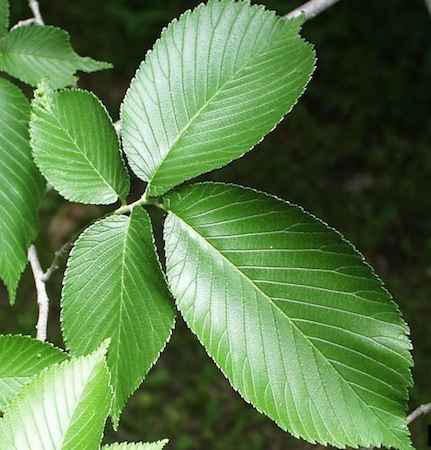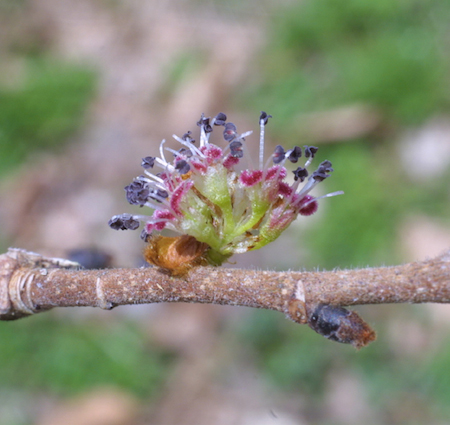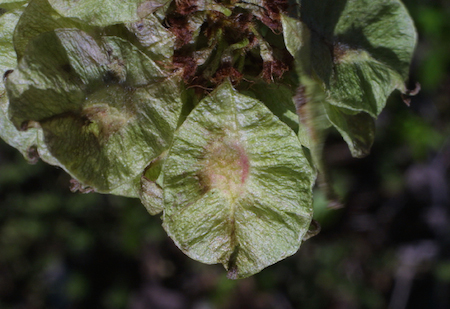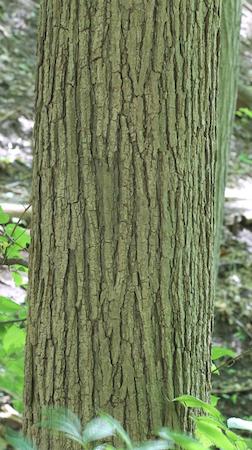Slippery Elm
Specifications
- Latin (scientific) name: Ulmus rubra. Rubra is Latin for red, referring to the rusty or reddish brown buds.
- Life expectancy: 150 years
-
Special characteristics:
This is a sturdy tree. It grows best in wet soils, especially in floodplain areas. Its wood is tough, like all of the elm trees. Dead branches can stay attached to the tree for long periods of time.
-
Annoyance factors:
This tree is susceptible to Dutch elm disease, which is spread by two varieties of the elm bark beetle. The disease is fatal.
-
Fun Facts:
The Slippery Elm is named for an attribute of its inner bark: it’s slimy and slippery. The bark was once used as a medicine for scurvy. People would chew the inner bark or grind it into flour.
-
Photo Credits:
Bark: Rob Routledge, Bugwood.org
Leaves: Paul Wray, Bugwood.org
Flowers: Steven J. Baskauf, Vanderbilt University Bioimages
Seeds: Steven J. Baskauf, Vanderbilt University Bioimages




